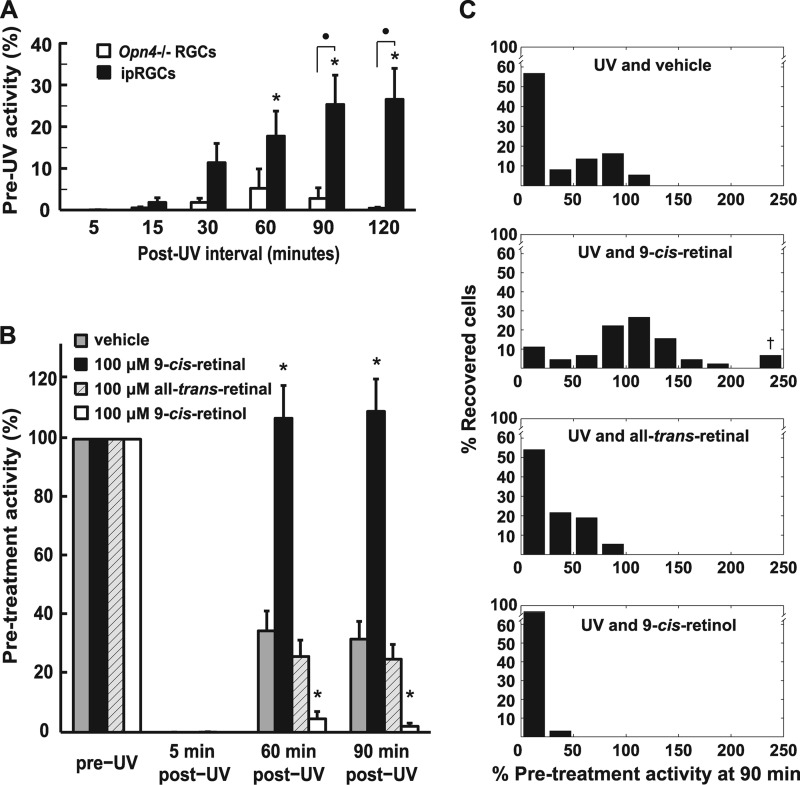FIGURE 2.
9-cis-retinal restores ipRGC activity after UV depletion. A, retinas were treated for 15-min with UV to deplete endogenous retinoids. Rod- and cone-driven RGC (Opn4−/−, n = 10 cells from 4 retinas) and ipRGC (wild-type, n = 23 cells from 4 retinas) activity in response to a periodic 1-min, 480-nm test stimulus (IR 13.6) was monitored for 2 h following UV treatment. *, p < 0.05, statistically significant difference in firing rate between ipRGCs and Opn4−/− RGCs; ●, ipRGC firing rate increase from zero statistically significant (repeated measures one-way ANOVA, Bonferroni-corrected). B, ipRGC activity is restored after 15-min of UV treatment by the addition of 100 μm 9-cis-retinal (n = 45 cells from 5 retinas). No activity exceeding that of vehicle control (n = 37 cells from 5 retinas) is seen with the addition of 100 μm all-trans-retinal (n = 37 cells from 6 retinas) or 100 μm 9-cis-retinol (n = 32 cells from 4 retinas). *, p < 0.05, 9-cis-retinal and 9-cis-retinol treatments resulted in a statistically significant difference from vehicle control and all other retinoid treatments (two-way ANOVA, Bonferroni-corrected). C, normalized histograms of ipRGC activity at the 90-min time point from B demonstrate that only 9-cis-retinal increases the activity of most cells above vehicle control. The y axis is the percentage of treated cells responding at the percent of their pre-UV light-induced activity level; †, three cells with activity of 234%, 330%, and 403%, respectively. Error bars are mean ± S.E.

